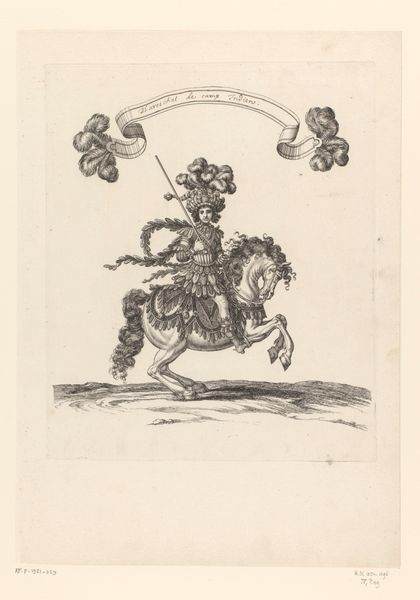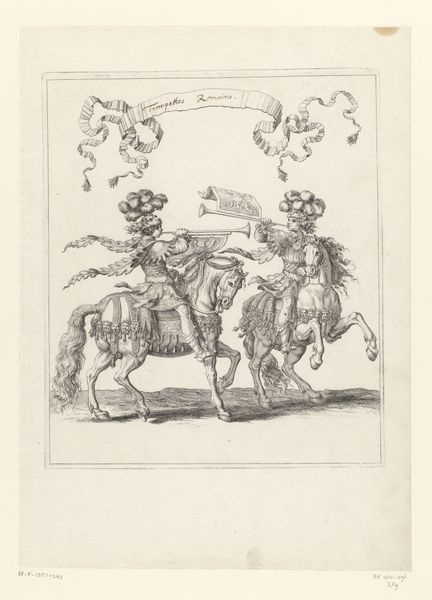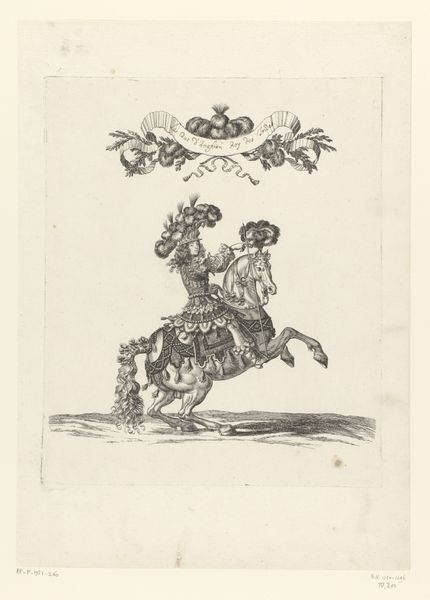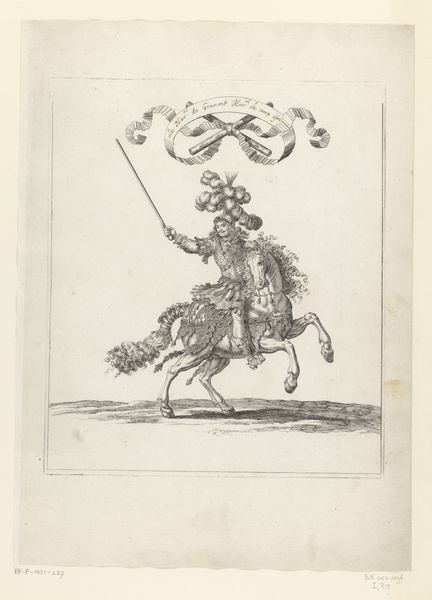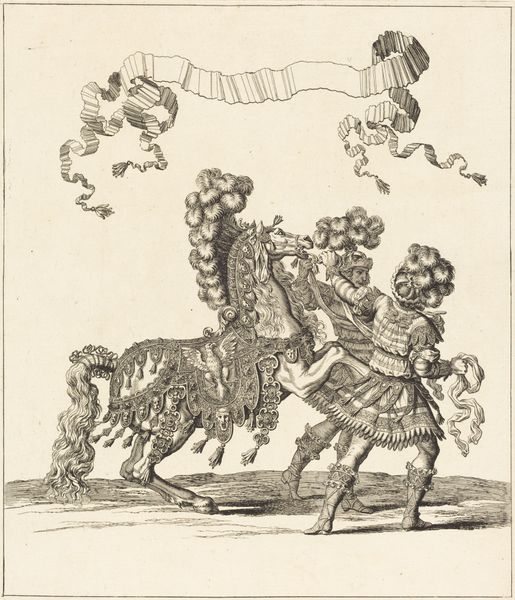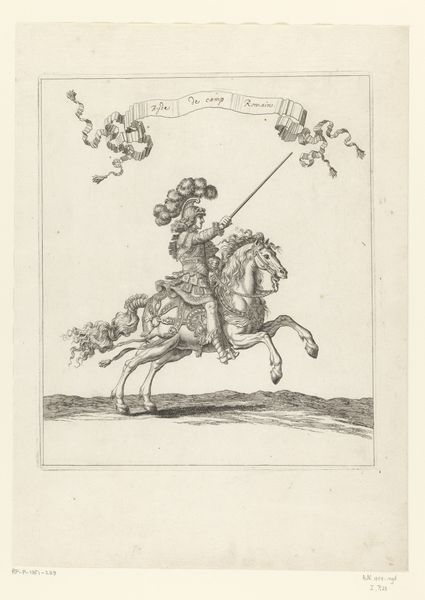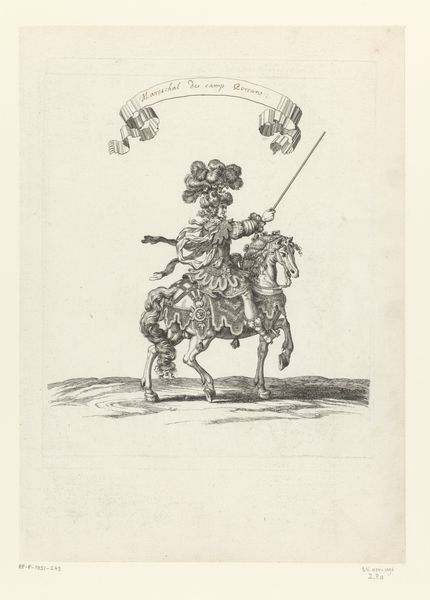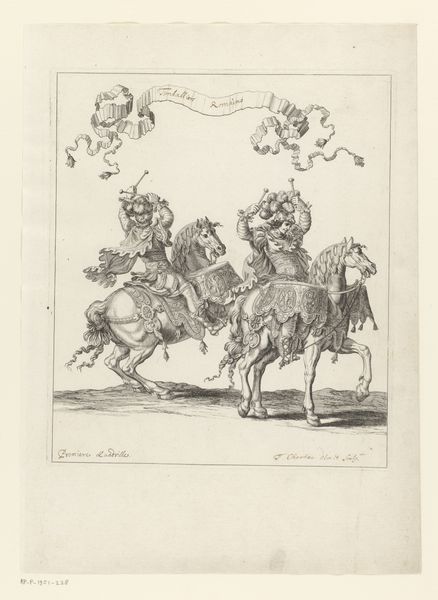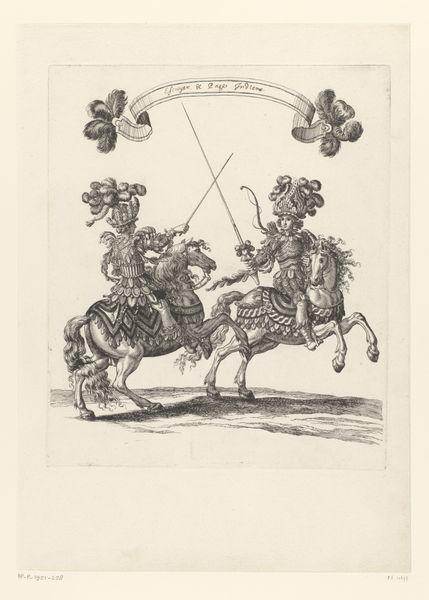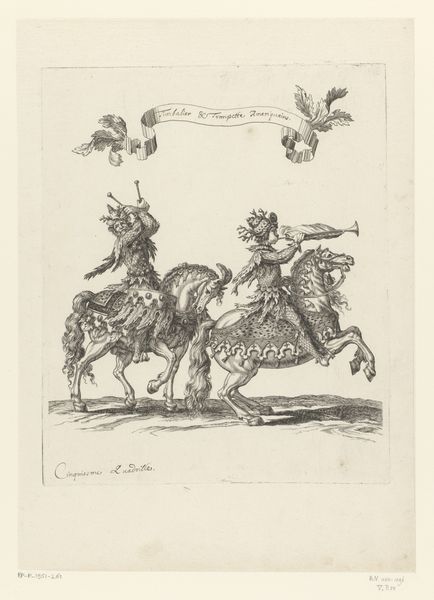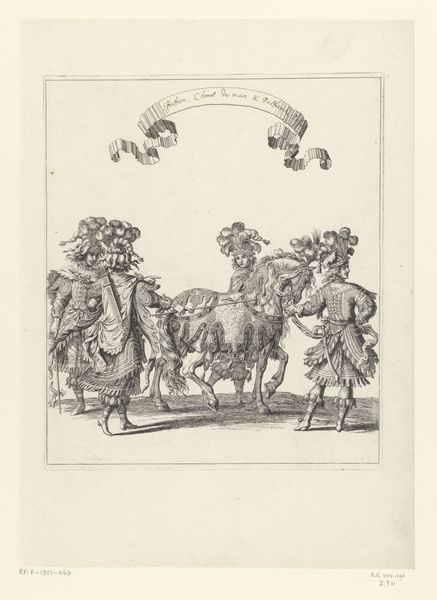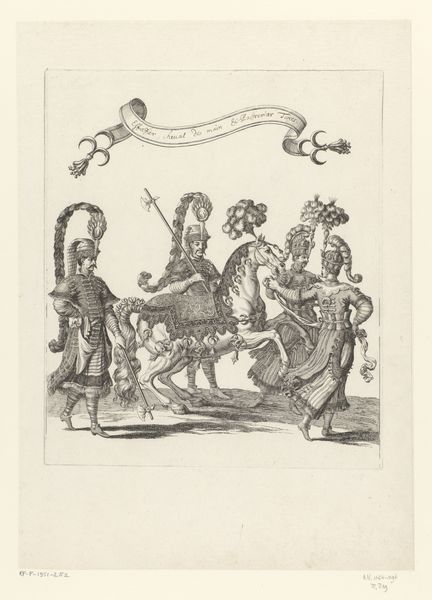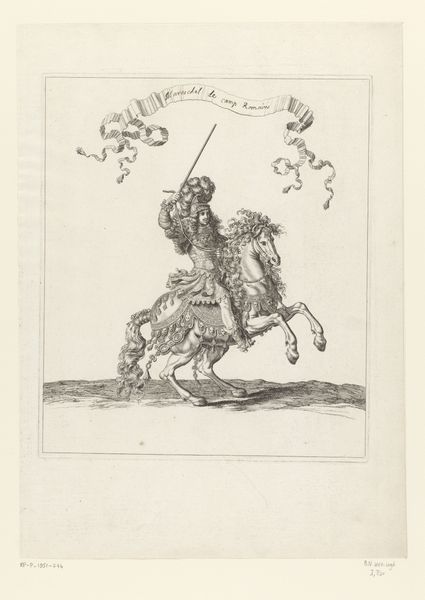
print, engraving
#
baroque
# print
#
old engraving style
#
figuration
#
horse
#
genre-painting
#
engraving
Dimensions: height 310 mm, width 260 mm
Copyright: Rijks Museum: Open Domain
François Chauveau created this print of a ‘Jousting Player and Servant on Horseback in Persian Costume’ sometime in the 17th century. It's an etching, meaning the image was incised in acid on a metal plate before being inked and printed. Made in France, it’s an elaborate depiction of social spectacle. Equestrian events were popular entertainments, often involving historical or exotic costumes and settings. Here, we see the artist’s interpretation of Persian dress, which would have seemed glamorous and foreign to a European audience. The print itself would have served as a souvenir of an actual event or as a vicarious experience for those excluded from such elite displays. To understand this image fully, historians might look at the history of courtly entertainment or the rise of print culture in early modern Europe. By studying fashion, social class, and artistic representation, we can better understand the complex meanings embedded in this seemingly simple image. Art history shows us that artworks are as contingent as any other kind of social record.
Comments
No comments
Be the first to comment and join the conversation on the ultimate creative platform.
